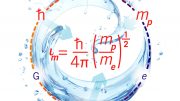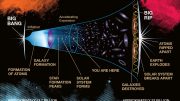
Game theory is a branch of mathematics that studies decision making and strategic interactions between individuals or groups. It is used to analyze situations in which participants must make choices that affect the outcome of a game or situation. Game theory provides a framework for understanding how individuals or groups make decisions, taking into account the actions and reactions of others. It is used in various fields such as economics, political science, psychology, and biology to analyze real-world scenarios, including negotiations, auctions, market competition, and even military strategy. By understanding the motivations, incentives, and constraints of each player, game theory helps to make predictions about the most likely outcome of a situation.
To comprehend the capability of autonomous vehicles in navigating the complexities of the road, scientists frequently resort to game theory – a branch of mathematics that deals with modeling the rational behavior of agents as they strive to achieve their objectives.
For years, Dejan Milutinovic, a UC Santa Cruz professor of electrical and computer engineering, has collaborated with fellow researchers in the complex subset of game theory known as differential games. This field has to do with players in motion. Among these games is the wall pursuit game, which offers a relatively uncomplicated framework for a scenario where a swifter pursuer aims to capture a slower evader who is limited to moving along a wall.
Since this game was first described nearly 60 years ago, there has been a dilemma within the game — a set of positions where it was thought that no game optimal solution existed. But now, Milutinovic and his colleagues have proved in a new paper published in the journal IEEE Transactions on Automatic Control that this long-standing dilemma does not actually exist and introduced a new method of analysis that proves there is always a deterministic solution to the wall pursuit game. This discovery opens the door to resolving other similar challenges that exist within the field of differential games, and enables better reasoning about autonomous systems such as driverless vehicles.
Game theory is used to reason about behavior across a wide range of fields, such as economics, political science, computer science, and engineering. Within game theory, the Nash equilibrium is one of the most commonly recognized concepts. The concept was introduced by mathematician John Nash and it defines game optimal strategies for all players in the game to finish the game with the least regret. Any player who chooses not to play their game optimal strategy will end up with more regret, therefore, rational players are all motivated to play their equilibrium strategy.
This concept applies to the wall pursuit game — a classical Nash equilibrium strategy pair for the two players, the pursuer and evader, that describes their best strategy in almost all of their positions. However, there are a set of positions between the pursuer and evader for which the classical analysis fails to yield the game optimal strategies and concludes with the existence of the dilemma. This set of positions is known as a singular surface – and for years, the research community has accepted the dilemma as fact.
But Milutinovic and his co-authors were unwilling to accept this.
“This bothered us because we thought, if the evader knows there is a singular surface, there is a threat that the evader can go to the singular surface and misuse it,” Milutinovic said. “The evader can force you to go to the singular surface where you don’t know how to act optimally — and then we just don’t know what the implication of that would be in much more complicated games.”
So Milutinovic and his coauthors came up with a new way to approach the problem, using a mathematical concept that was not in existence when the wall pursuit game was originally conceived. By using the viscosity solution of the Hamilton–Jacobi–Isaacs equation and introducing a rate of loss analysis for solving the singular surface they were able to find that a game optimal solution can be determined in all circumstances of the game and resolve the dilemma.
The viscosity solution of partial differential equations is a mathematical concept that was non-existent until the 1980s and offers a unique line of reasoning about the solution of the Hamilton-Jacobi-Isaacs equation. It is now well known that the concept is relevant for reasoning about optimal control and game theory problems.
Using viscosity solutions, which are functions, to solve game theory problems involves using calculus to find the derivatives of these functions. It is relatively easy to find game optimal solutions when the viscosity solution associated with a game has well-defined derivatives. This is not the case for the wall-pursuit game, and this lack of well-defined derivatives creates the dilemma.
Typically when a dilemma exists, a practical approach is that players randomly choose one of the possible actions and accept losses resulting from these decisions. But here lies the catch: if there is a loss, each rational player will want to minimize it.
So to find how players might minimize their losses, the authors analyzed the viscosity solution of the Hamilton-Jacobi-Isaacs equation around the singular surface where the derivatives are not well-defined. Then, they introduced a rate of loss analysis across these singular surface states of the equation. They found that when each actor minimizes its rate of losses, there are well-defined game strategies for their actions on the singular surface.
The authors found that not only does this rate of loss minimization define the game optimal actions for the singular surface, but it is also in agreement with the game optimal actions in every possible state where the classical analysis is also able to find these actions.
“When we take the rate of loss analysis and apply it elsewhere, the game optimal actions from the classical analysis are not impacted,” Milutinovic said. “We take the classical theory and we augment it with the rate of loss analysis, so a solution exists everywhere. This is an important result showing that the augmentation is not just a fix to find a solution on the singular surface, but a fundamental contribution to game theory.
Milutinovic and his coauthors are interested in exploring other game theory problems with singular surfaces where their new method could be applied. The paper is also an open call to the research community to similarly examine other dilemmas.
“Now the question is, what kind of other dilemmas can we solve?” Milutinovic said.
Reference: “Rate of Loss Characterization That Resolves the Dilemma of the Wall Pursuit Game Solution” by Dejan Milutinović, David W. Casbeer, Alexander Von Moll, Meir Pachter and Eloy Garcia, January 2023, IEEE Transactions on Automatic Control.
DOI: 10.1109/TAC.2021.3137786









Be the first to comment on "Scientist Solves Nearly 60-Year-Old Game Theory Conundrum"